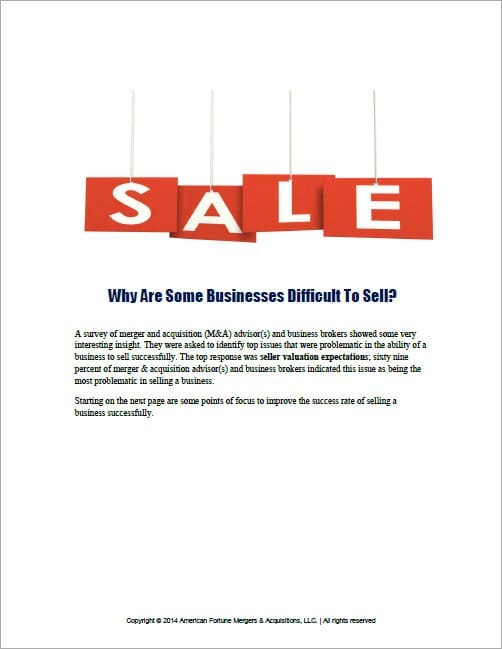Understanding Business Value
Most small business owners are so busy running their businesses on a daily basis that they do not step back and view their business from an outsider’s perspective. They are emotionally invested in their work and often have a biased opinion of the business value of their business. In this article you will learn about business valuations as well as how to increase business value.
The magnitude of this issue is increased when you realize that most owners have the majority of their business value is tied up in their business. When an owner decides to sell their business, they may be in for a shock when they discover their business worth is far less than expected. Since every owner will inevitably depart from their business, it’s a good idea to preserve that net worth by working to increase the value of the business on an ongoing basis.
The good news is that there are a number of ways of how to increase business value. Include business exit planning in growing the value of your business. It does take discipline and a methodical approach, but the results are definitely worth the effort. The place to focus is on the value drivers of the business. Value drivers are the characteristics that reduce the risk of owning the business or increase the probability the business will grow in the future. If these characteristics are present in your business, a buyer will pay a premium price. The most common value drivers include: Management Team, Systems & Procedures, Customers & Suppliers, Facilities & Equipment, Financial Discipline and Growth Strategy.
Management Team – too many business owners make the mistake of retaining complete control which makes it hard to separate them from the business. Start now to designate a manager or assemble a team that is capable of running the business now and after your departure.
Systems & Procedures – reliable systems and well documented procedures will help sustain the growth of a business and ensure a smooth transition to a new owner. Write a formal business plan; create written job descriptions; develop a systems manual; organize customer and supplier files; consider investing in technology and software tools that will help streamline current procedures.
Customers & Suppliers – a diversified customer and supplier base helps to insulate a company from the loss of a single customer or dominant supplier. No one customer should account for more than 10-20% of your total sales. This may require you to invest in additional capacity that will allow you to broaden your customer base. Taking the time to investigate your current suppliers is a prudent strategy and may result in reducing your cost of goods as well as your reliance on a major supplier.
Facilities & Equipment – make sure your facilities are up to code and convey the image you want to project. Invest in new equipment and maintain service records.
Financial Discipline – all businesses are valued based on the health of their historical income statements as well as 5-year projections that can be substantiated. The existence of financial controls supports an owner’s profitability claims. It is extremely important that your company’s financial records are accurate and verifiable. A potential buyer or lender will want to carefully review them.
Growth Strategy – being able to demonstrate a realistic growth strategy is vital to the perceived business value of your business. Creating a pro forma statement with projected discretionary earnings is the best way to communicate future opportunities. Make sure you document your assumptions and clearly outline new products, marketing efforts, increased demand, industry dynamics and other factors that impact growth.
A business valuation serves as a great tool to benchmark the current business value. Due to the historical use of unreliable valuation approaches, it is recommended that you use an unbiased and credible business valuation firm. If the valuation proves insufficient to support your long-term financial objectives, you should devote a significant effort toward focusing on the key value drivers and the necessary action steps to build value. If the valuation is right in line with your expectations, you should take steps to preserve its value and occasionally have the business re-valued. Industry dynamics and the health of the economy are external factors that can greatly alter the market value of your business.
After implementing the suggested actions above, you will have made significant progress in increasing the value of your business and ultimately your own financial reward.
For more information on how to increase business value and business valuation services contact one of our Advisors at 502-244-0480.
Learn how to increase business value? Discover the key valuation drivers that have impact on a business value at www.businessvaluation.bz
Posted by Brian s. Mazar, CBI, MBA
American Fortune Business Valuation Services







